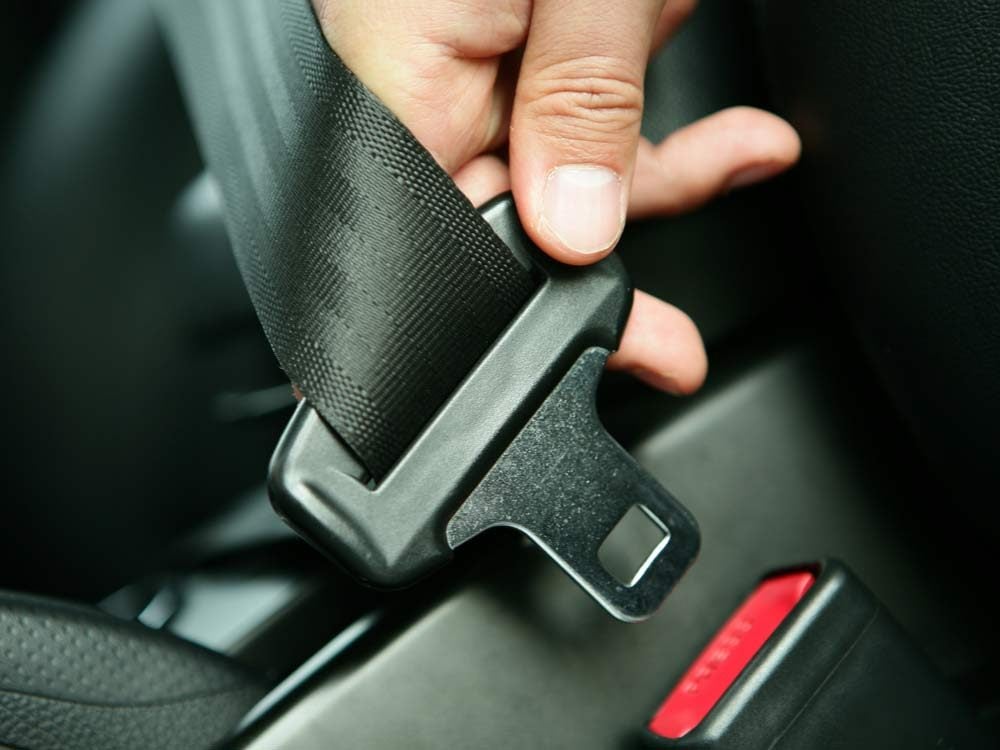
Seat Belts
In the event of a crash, seat belts are designed to keep you inside the vehicle. They also reduce the risk that you will collide with the steering wheel, dashboard or windshield. New seat belt designs have the following additional features that improve seat belt performance:
- Adjustable upper belts. An adjustable upper belt lets you change the position of the shoulder strap to accommodate a person’s size. This feature may encourage passengers to wear their belts, since it increases shoulder belt comfort.
- Seat belt pretensioner. Pretensioners retract the seat belt to remove excess slack, almost instantly, in a crash. However, you still need to adjust your seat belt so that it fits as snugly as possible, since pretensioners are not powerful enough to pull you back into your seat in the event of an impact.
- Energy management features. Energy management features allow seat belts to “give” or yield during a severe crash to prevent forces on the shoulder belt from concentrating too much energy on your chest. These features include “load limiters” built into the shoulder belt retractor and/or “tear stitching” in the webbing that causes the seat belt to extend gradually.
- Rear center seat lap/shoulder belts. Some manufacturers provide a rear centre lap/shoulder belt. This added feature is especially beneficial to older children and children in booster seats who are often seated in the rear centre position.
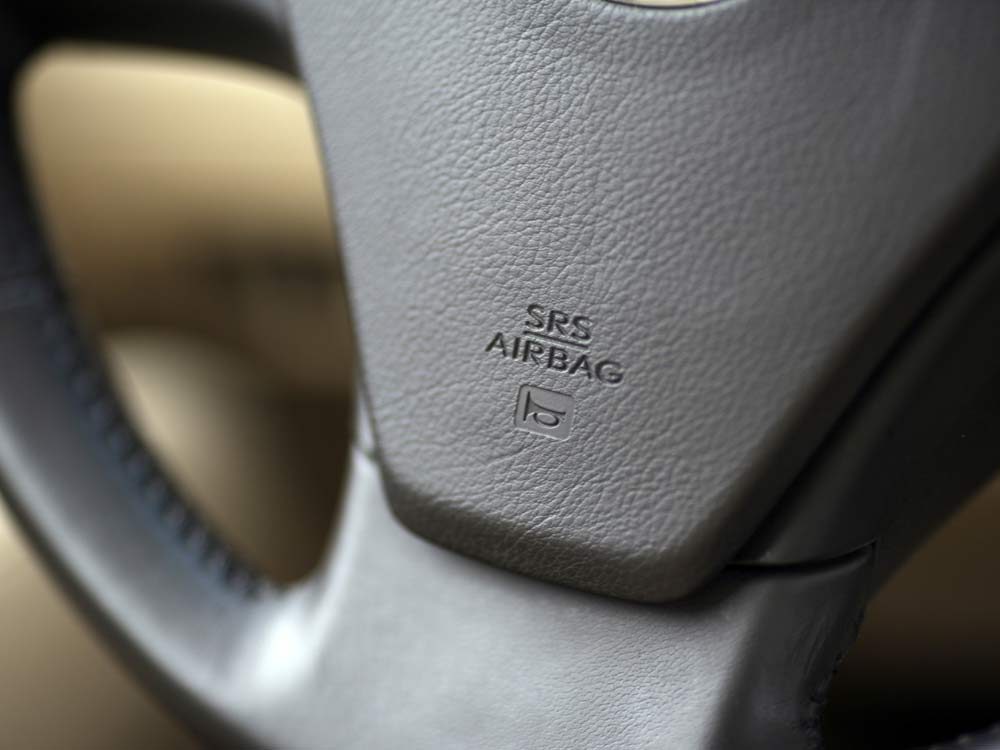
Air Bags
Depending on the speed at impact and the stiffness of the object struck, front air bags inflate to prevent occupants from hitting the dashboard, steering wheel, and windshield. Side air bags reduce the risk that occupants will hit the door or objects that crash through it.
Although air bags provide life-saving benefits for the vast majority of people, there are situations in which air bag deployment can have adverse effects, such as when occupants are unbelted. Front air bags do not eliminate the need for seat belts and are not designed to offer protection in rollovers, rear, or side impacts. In fact, maximum air bag effectiveness depends upon seat belts, which help keep you in place should a collision occur. You can significantly reduce the risk of injury from an air bag by buckling your seat belt and keeping about 10 inches or more between your breastbone and the air bag.
Children can be killed or seriously injured by an air bag, so you should always put children age 12 and under in the rear seat. You should never use a rear-facing child seat in the front seat of a vehicle equipped with a front passenger air bag unless the air bag is off.
Ford Motor Company’s futurist shares six automotive trends that will shape the car industry in 2017.
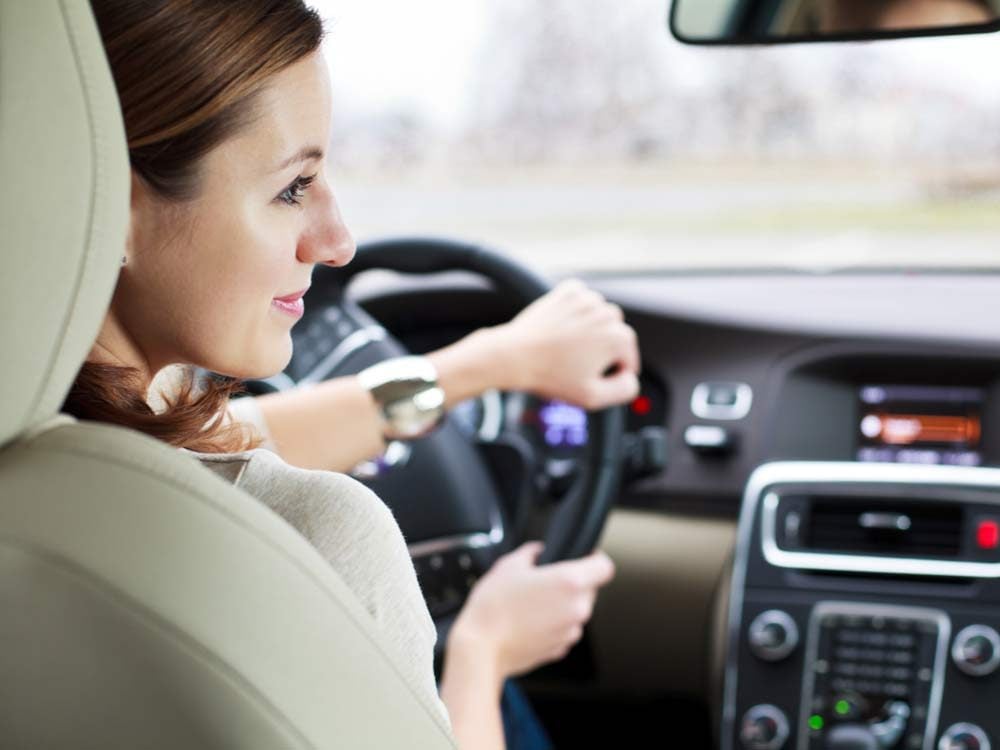
Head Injury Protection
Head injury protection consists of foam or other energy absorbing material under the trim of the vehicle interior and is likely to be invisible to vehicle occupants. Some vehicles have head air bags. While all head air bags are designed to deploy in side impacts, some are also designed to deploy during rollovers. Both types of air bags are designed to help protect occupants from injuries caused when their head strikes the upper interior of a vehicle.
Check out 5 of the Silliest Misconceptions About Cars.
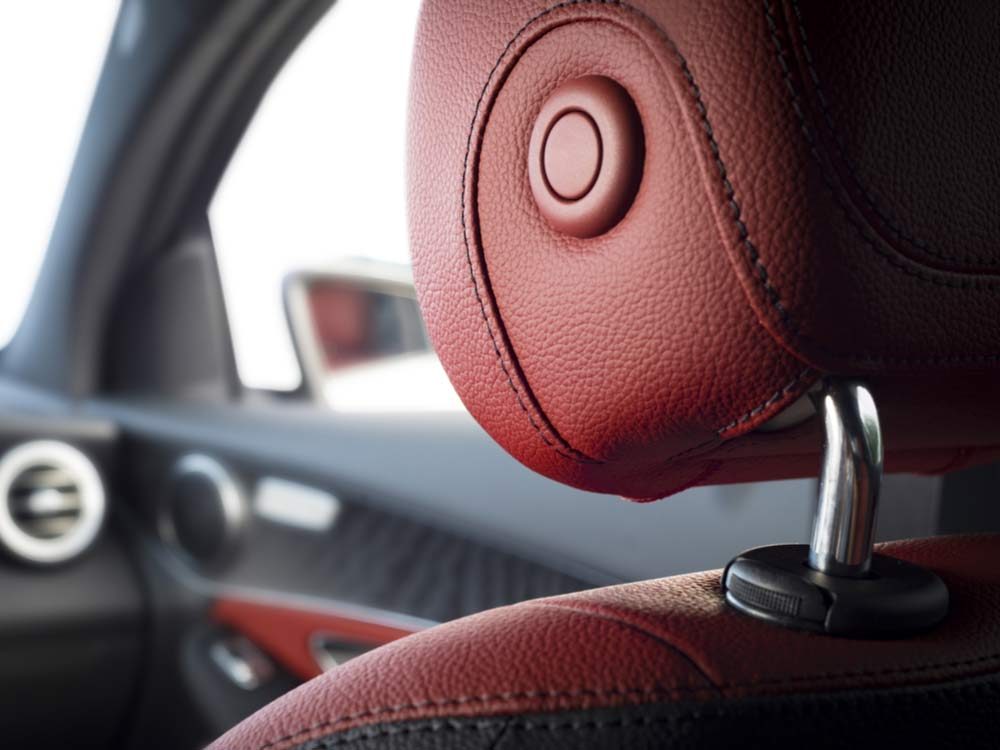
Head Restraints
Head restraints are extensions of the vehicle’s seats that limit head movement during a rear-impact crash, thus, reducing the probability of neck injury. Head restraints meeting specific size and strength requirements are required in front seats, but not in rear seats. While you must adjust most head restraints manually, some adjust automatically with changes in seat position or dynamically in a crash. In general, dynamic head restraints provide the best protection.
Plus: If You Own Any of These 10 Cars, It’s Way More Likely to Get Stolen
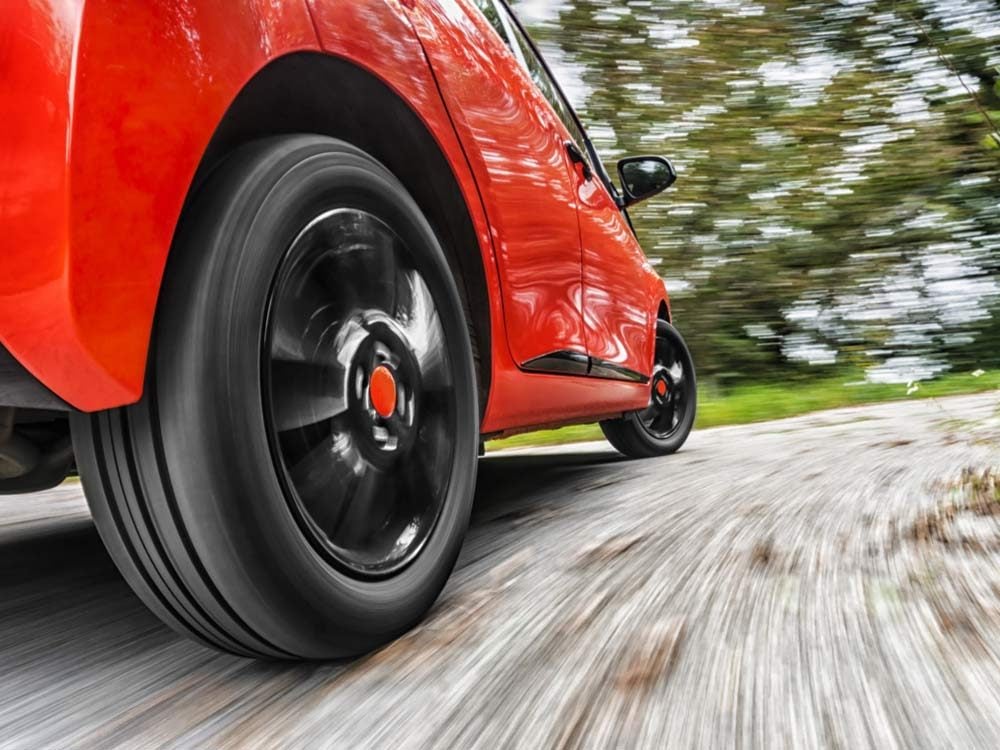
Antilock Brake System
An antilock brake system (ABS) prevents a vehicle’s wheels from locking during “panic” braking, which allows the driver to maintain greater steering control—a key factor in avoiding a collision. However, an ABS does not guarantee your ability to avoid a crash. Furthermore, you still may lose control when driving at excessive speeds or when using extreme steering maneuvers. Learning to use the ABS correctly will provide you with the greatest benefit from the system.
All passenger cars equipped with ABS have four-wheel ABS. Sport utility vehicles, trucks, and vans equipped with ABS can have either four-wheel or two-wheel ABS. Four-wheel ABS monitor and control all the wheels of the vehicle, while two-wheel ABS only monitor and control the rear wheels of a vehicle.
Some ABS’s also include brake assist, which senses emergency braking by detecting the speed or force at which the driver presses the brake pedal and boosts the power as needed. Under certain conditions, brake assist may reach the braking force needed to activate the ABS more quickly and easily compared with vehicles without brake assist, and can potentially reduce overall stopping distance by eliminating the delay caused by not braking hard enough or soon enough.
Here are five driving hazards that should remain on your radar during the warmer months.
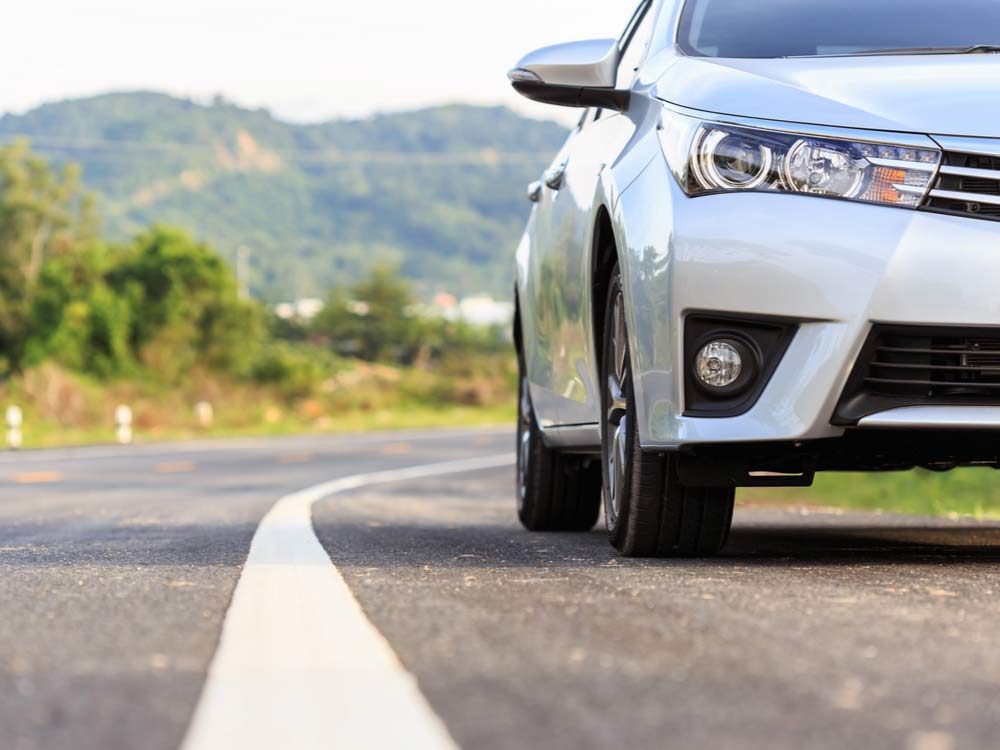
Traction Control
Traction control systems improve vehicle stability by controlling the amount the drive wheels can slip when you apply excess power. The system automatically adjusts the engine power output and, in some systems, applies braking force to selected wheels during acceleration. Traction control is mainly found in vehicles with four-wheel antilock brake systems.
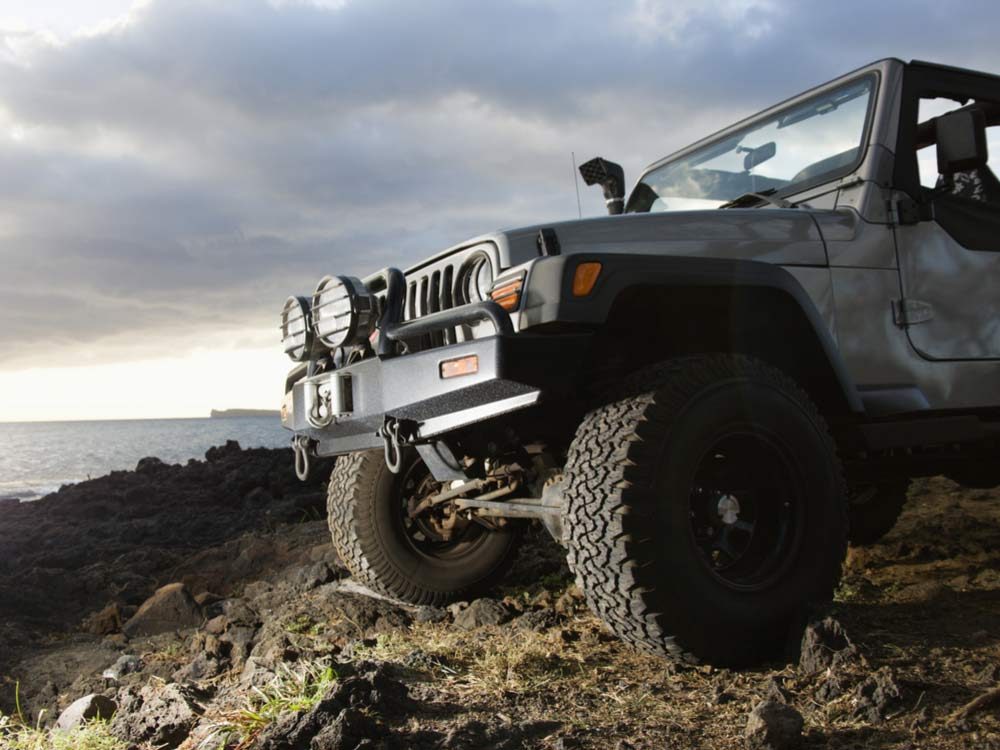
All-Wheel Drive
All-wheel drive distributes power to both front and rear wheels to maximize traction. Unless combined with traction control, all-wheel drive systems do not prevent the drive wheels from slipping when you apply excess power during acceleration.
Here are 7 Ways You’re Completely Wasting Money on Your Car.
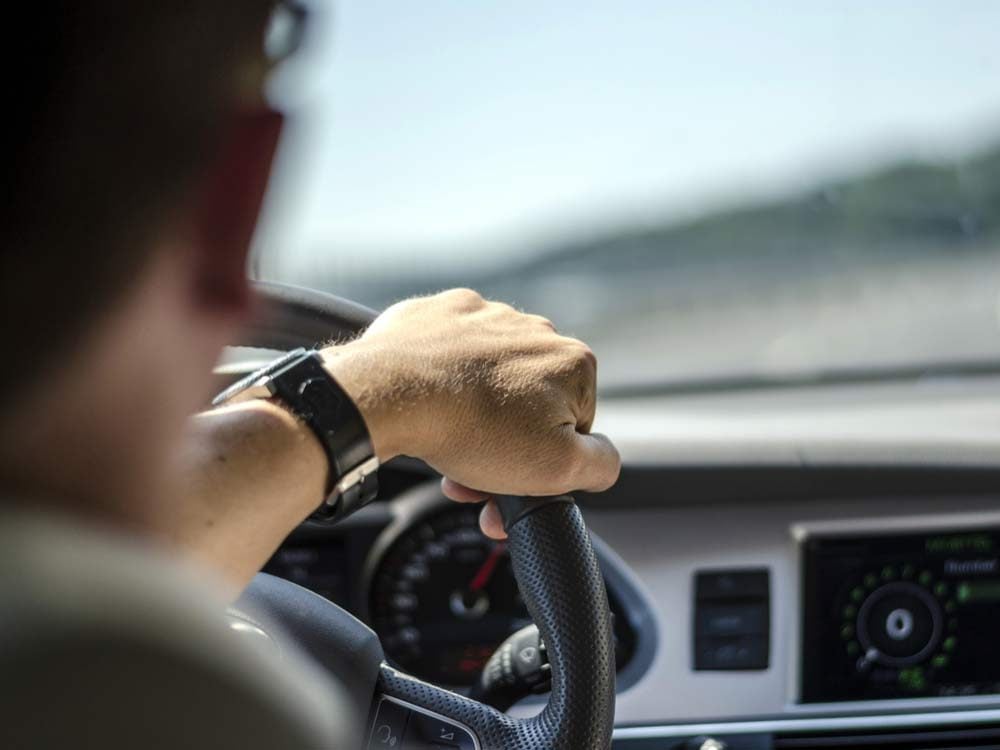
Electronic Stability Control
Electronic stability control (which is offered under various trade names) is designed to assist drivers in maintaining control of their vehicles during extreme steering maneuvers. Electronic stability control senses when a vehicle is starting to spin out (oversteer) or plow out (understeer), and it automatically applies the brake to a single wheel. It is intended to reduce the occurrence of crashes in which vehicles veer off the road and strike curbs, soft shoulders, guard rails and other objects that initiate rollovers. However, it can’t keep a vehicle on the road if its speed is simply too great for the curve and the available traction.
Every driver should stock up on these 14 essentials for getting organized, staying safe and managing everyday emergencies.
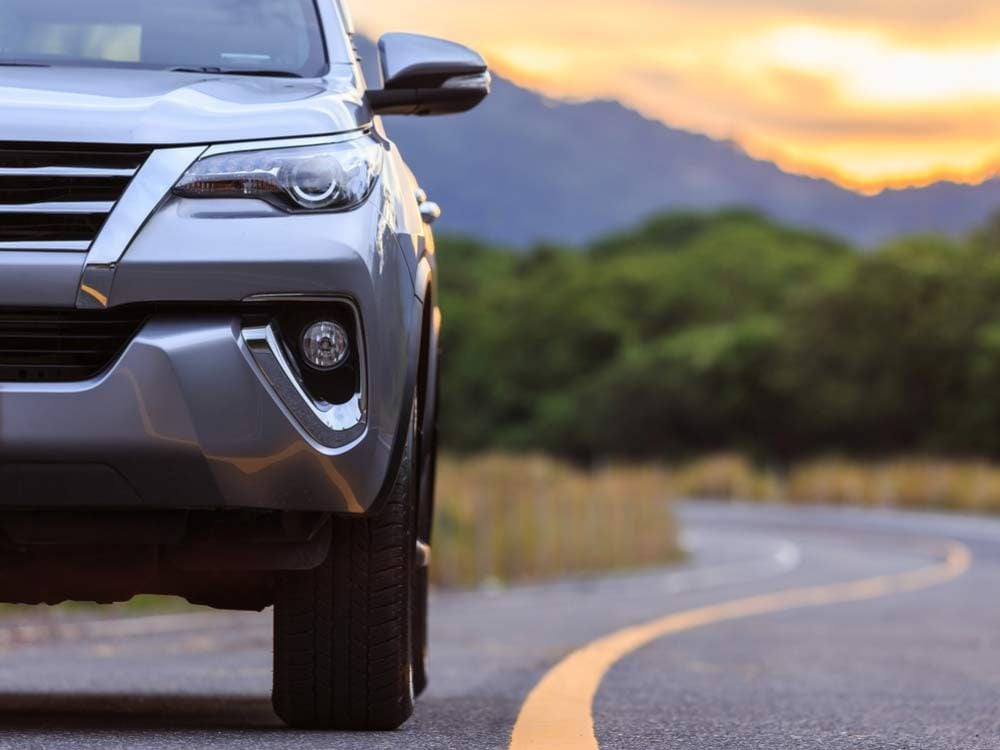
Weight
Crash data show that heavy vehicles offer more protection than light vehicles with the same safety equipment, particularly in two-vehicle crashes.